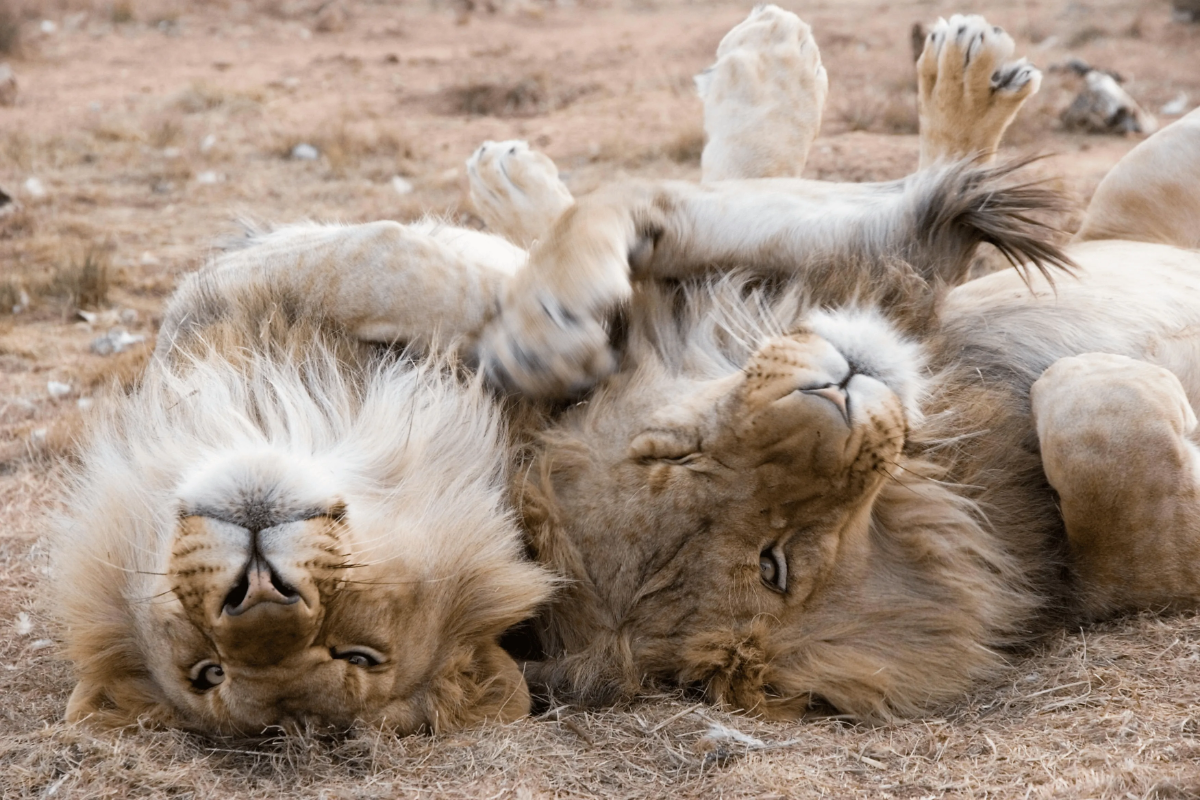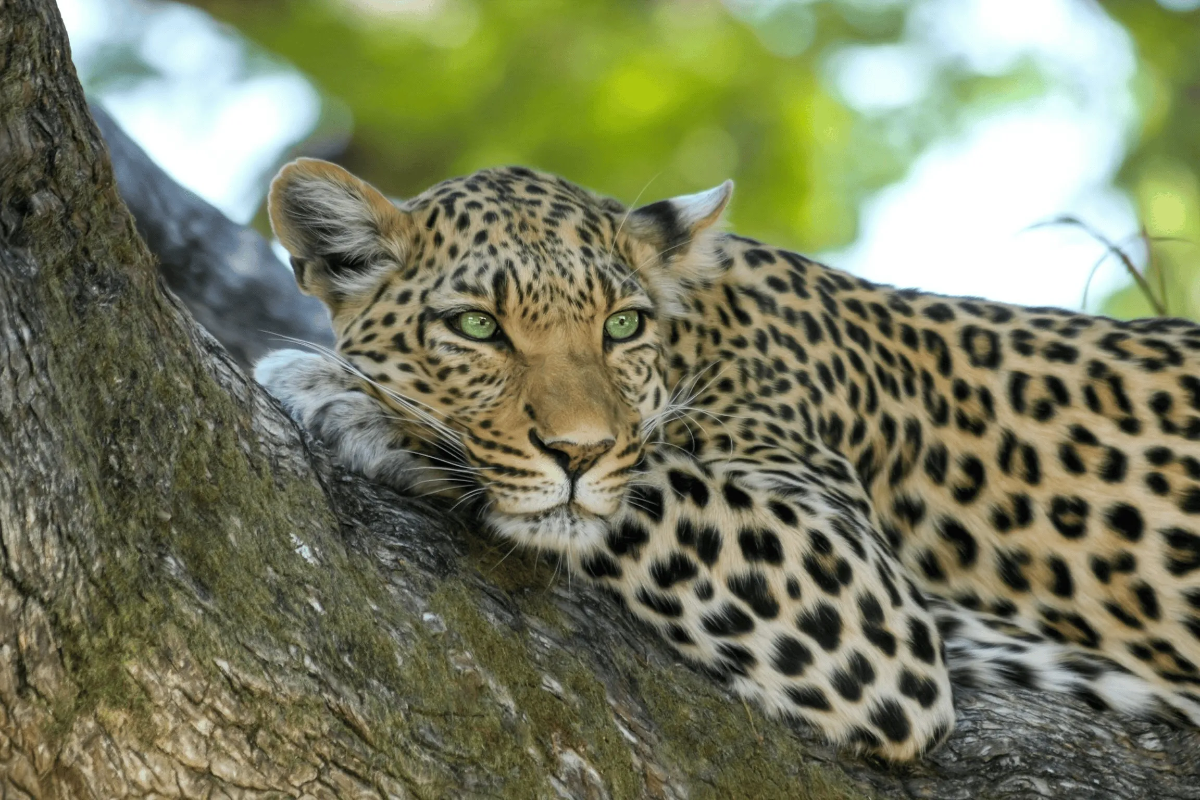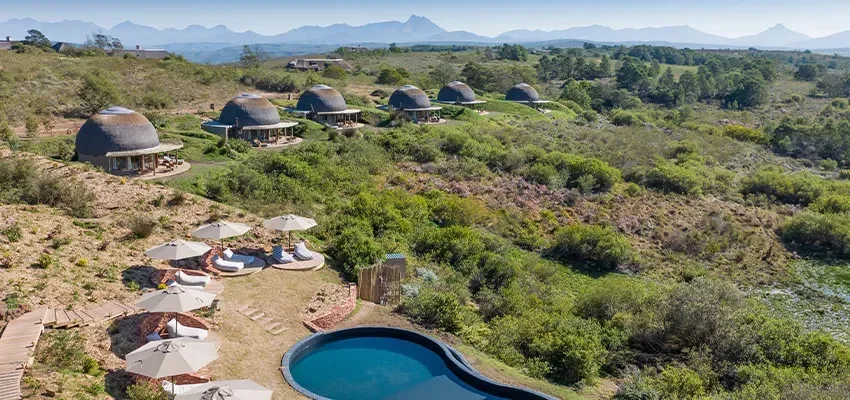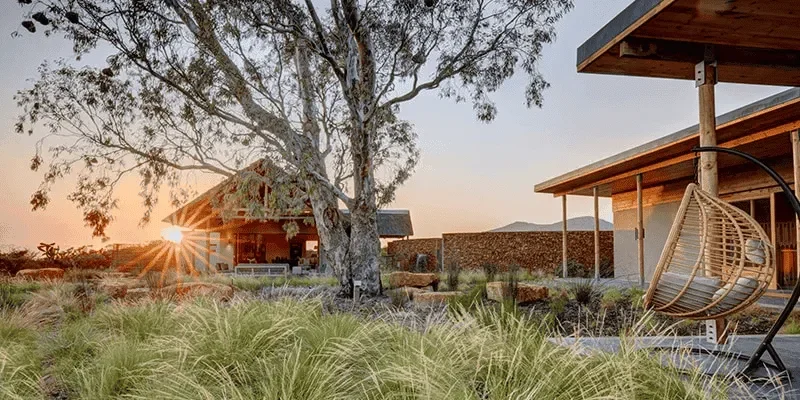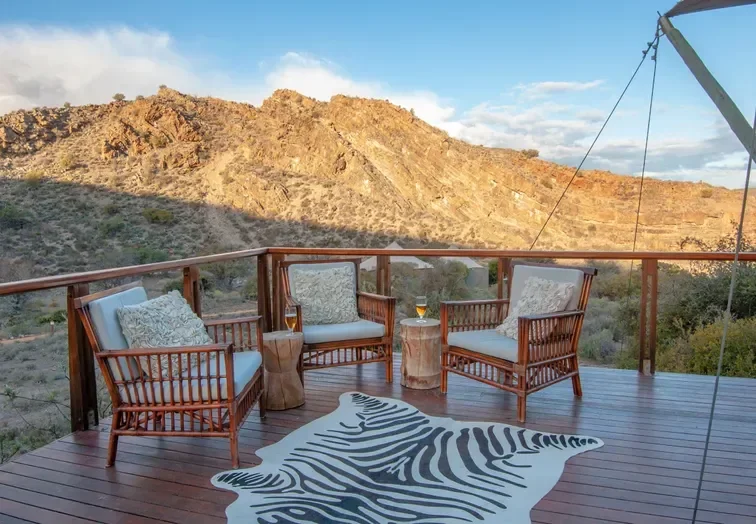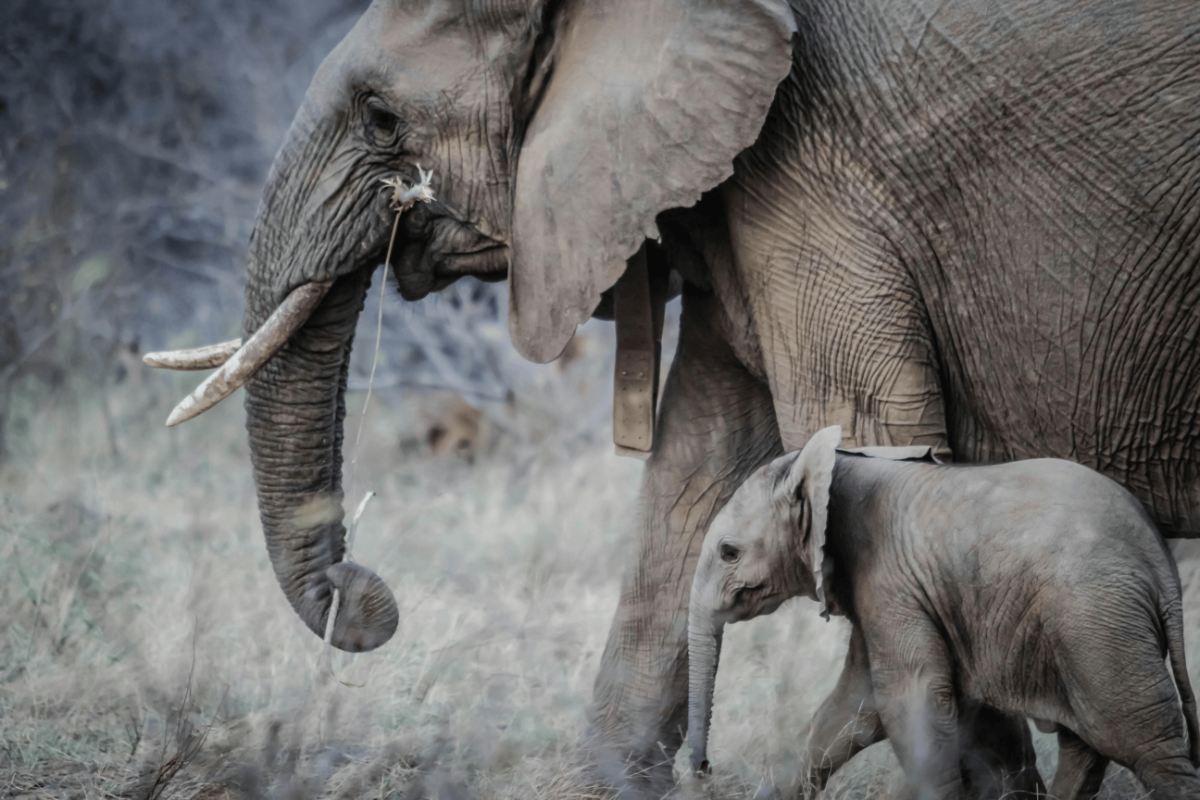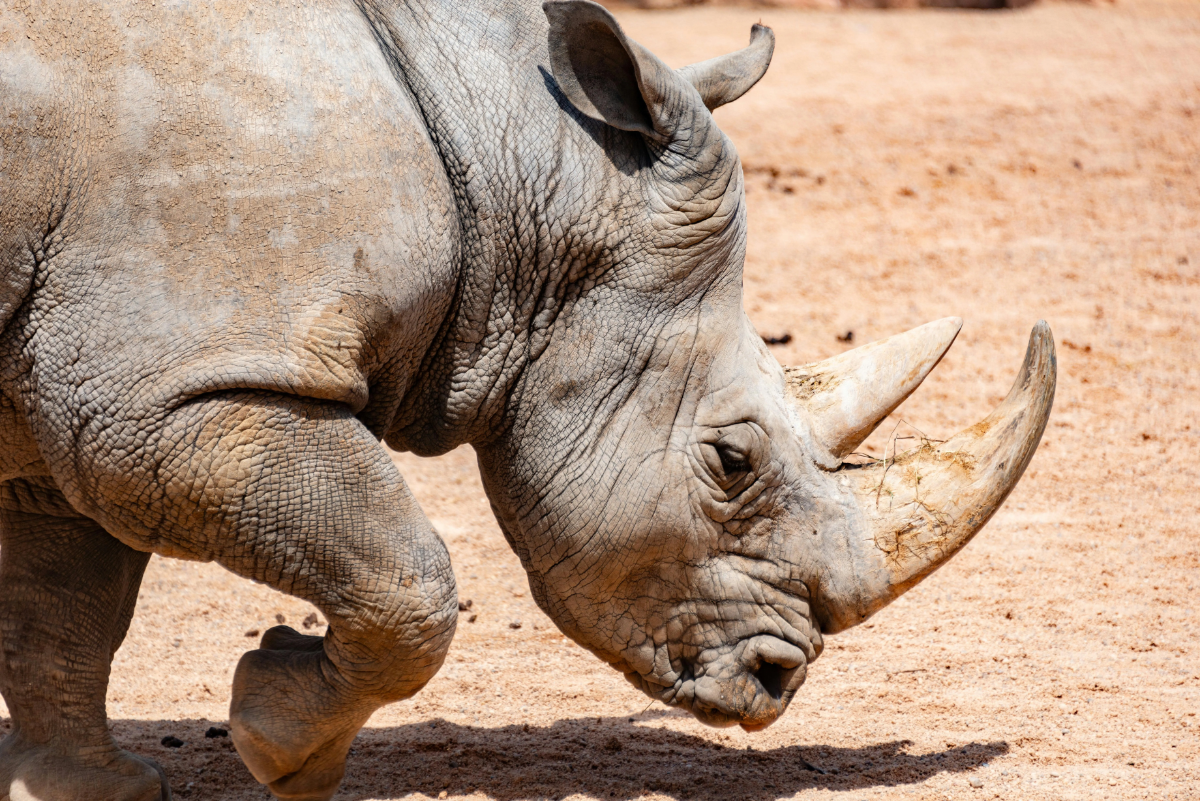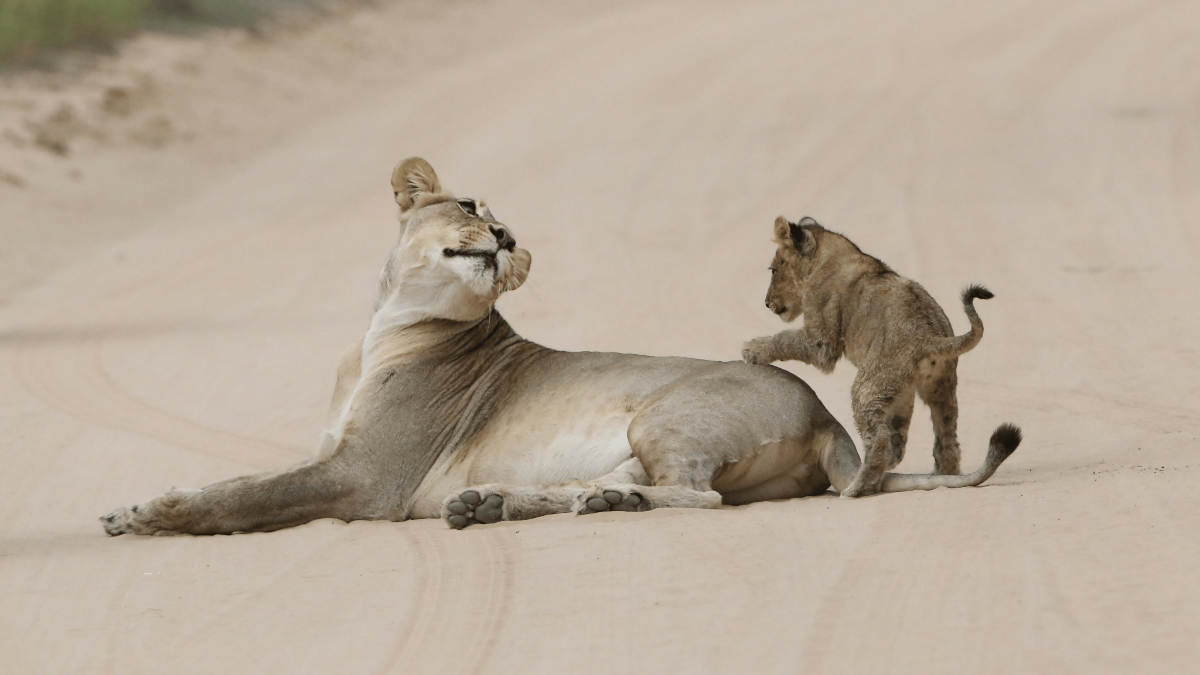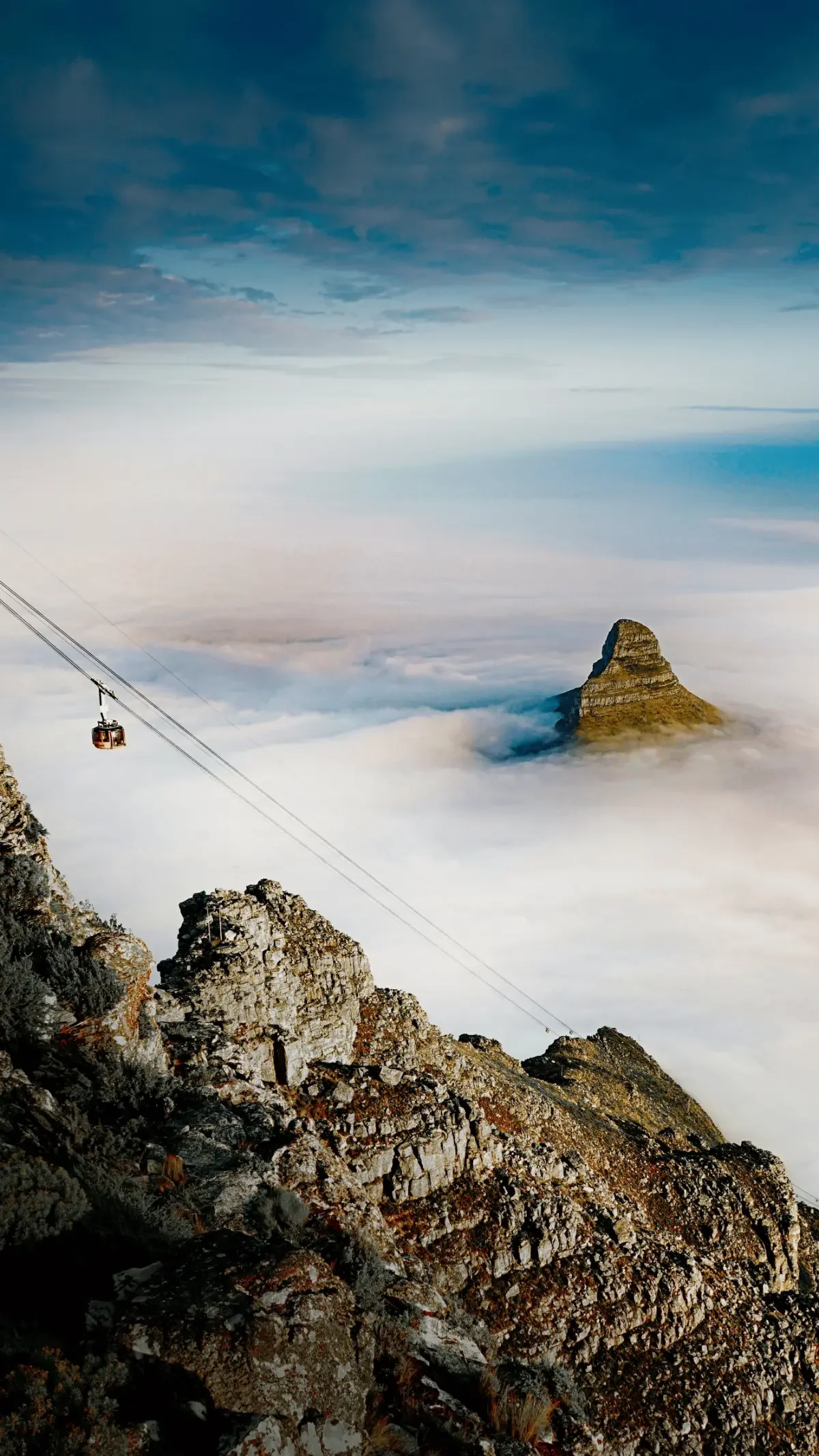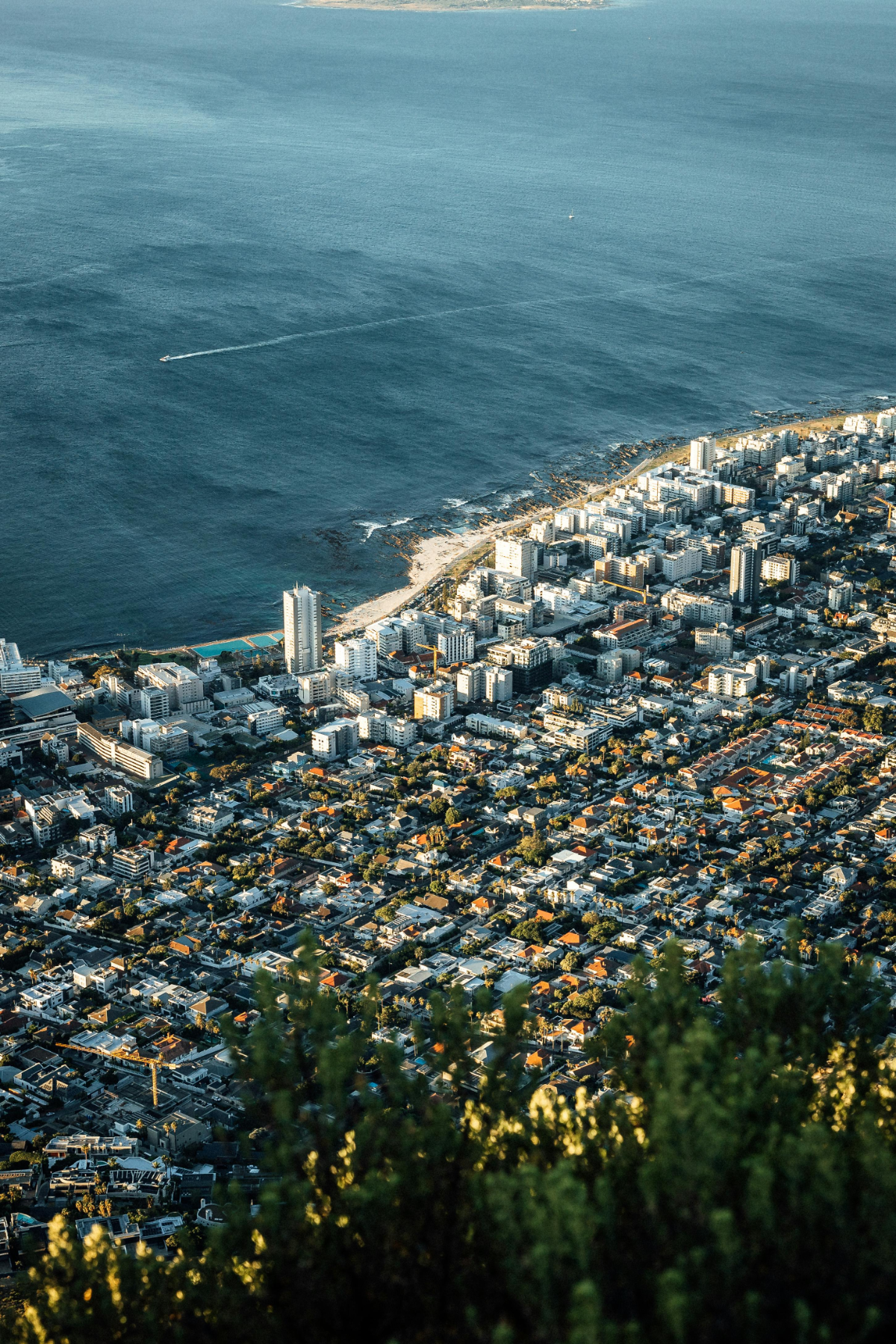Cape Town Safari Guide: Best Game Reserves and Wildlife
Last Update October 28, 2025
Safari game parks near Cape Town: Big Five drives, dawn-to-dusk itineraries, conservation-oriented lodges, distances, best seasons, and insider travel tips.
The Western Cape is celebrated for surf‑washed beaches and world‑renowned wine, yet a quieter story unfolds where fynbos valleys roll into Little Karoo plains. Here, an intricate network of game reserves protects elephants, lions, buffalo, and endangered Cape mountain zebra beneath an open sky punctuated by pale pink dawns. These parks, together with the region's national parks, form part of Africa's iconic safari landscape, renowned for its unique biodiversity and commitment to wildlife protection. Because these landscapes lie outside the malaria belt, travellers exchange preventative pills and clinic queues for a carefree adventure that can begin and end in Cape Town’s downtown heartbeat.
Unlike the broad expanse of Kruger National Park, South Africa's most famous safari destination and a cornerstone of Africa's safari tradition, these reserves are private, and that intimacy translates into fewer vehicles, more flexible game drives, and guides who interpret the land like poets reciting a favorite verse. You may sit alone at a sundowner spot, hearing nothing but cicadas and the soft clink of ice against a glass, the city already a distant memory.
Table of Contents
Affiliate Disclosure
Some links in this post are affiliate links. That means we may earn a small commission, at no additional cost to you, if you choose to make a purchase. These are always brands, stays, or experiences we would recommend to a dear friend. Thank you for supporting the quiet sustainability of Terra Selene.
Cape Town: Gateway to Adventure
Few capitals gift visitors such contrast: one hour you sip flat whites in the Company’s Garden, the next you crest Sir Lowry’s Pass to a panorama of endless scrub and serrated mountains. Table Mountain looms behind as you trade asphalt for gravel, with the sea close by, yet cell reception lingers, proof of how seamlessly urban infrastructure and wilderness converge.
Logistics are beautifully simple. Collect a rental car at dawn, cars make it easy to reach the reserves at your own pace and offer flexibility for stops along the way, follow signage that soon reads more like an invitation, ‘buffalo crossing’, ‘nature reserve ahead’, and arrive while morning shadows still stretch long across the veld. Many lodges also run shuttles, a comfort for visitors who prefer to rest, watch for ostriches, and know they will be delivered to the reserve gate just in time for brunch.
Planning Your Day Trip or Overnight Safari
A day safari begins early: leave Cape Town around 06:30, crest Sir Lowry’s Pass just as sunrise bleeds gold across False Bay, and roll through Aquila’s gates before 08:30 AM, perfect timing for the reserve’s first morning game drive. Because Aquila Private Game Reserve is located under two hours from Cape Town and offers morning, afternoon, and sunset drives every day, you can track lions before brunch, witness rhinos wallow at midday, and still be sipping pinot at the V&A Waterfront by nightfall. An open‑air boma lunch of Cape Malay‑spiced vegetables and smoke‑kissed venison turns the noon lull into a delicious meal, the Little Karoo breeze carrying hints of wild sage while giraffes silhouette the ridgeline.
Yet the veld after dark speaks an entirely different dialect. Check into a starlit chalet and the silence becomes a living textbook: jackals annotate the night with yips, distant thunder hints at migrating buffalo, and the Milky Way pours unchecked across an ink‑black sky. Most Western Cape lodges include full board, dinner, dawn coffee, brunch, and two daily game drives, so you wake before first light, steam curling from your mug while your tracker translates fresh leopard spoor into morning strategy. At Gondwana Private Game Reserve, guests may opt for either half‑board flexibility or the ease of a full‑board package, pairing sunset canapés at Kwena Lodge with stories that linger long after the flames die down.
Whether your safari spans twelve hours or lingers for two restorative nights, remember that nature sets the timetable. Rangers, incredibly knowledgeable and intuitively attuned to each reserve’s pulse, blend folklore, medicinal plant lore, and hard conservation science, ensuring every bend in the track feels purposeful. When you swap game-drive dust for sea air again, unlock our detailed guide to the Mother City, pinpointing our cliff-edge sunset spots and hidden pocket beaches.
Choosing the Right Western Cape Game Reserve
Each private game reserve holds a distinct personality. Some are sculpted for romance, all flickering lanterns and freestanding soaking tubs; others champion family adventure with junior‑ranger activities and spacious chalets built for two adults plus little ones. Decide whether you crave Big Five drama, botanical rarities, or predator‑rehabilitation insight, then let setting and ethos guide the final choice.
For travelers who measure luxury by ecological impact rather than thread count, note each reserve’s commitment to solar power, re‑wilding programs, and anti‑poaching initiatives. You are not just choosing where to sleep, you are choosing which conservation narrative to amplify.
Aquila Private Game Reserve
Less than two hours’ drive (about 180 km) north‑east of Cape Town, the 10,000-hectare Aquila rises from the arid folds of the Little Karoo. Thatched gateways flank bronze sculptures echoing ancient Khoi‑San kraals, and your first game drive may reveal lions stretched beneath shepherd‑tree shade or white rhinos dust‑bathing in ochre soil.
Aquila hosts the full Big Five across riverine thickets and rocky ridges where indigenous aloes bloom crimson in winter. Anti‑poaching patrols, veterinary response teams, and a predator‑rehabilitation centre form a vital part of broader wildlife conservation in the region.
Guests choose Premier Lodges overlooking a waterhole, spacious Family Cottages sleeping up to six, or elevated Safari Tents where canvas walls flutter with night‑time breeze. All options feature ensuite bathrooms, hand‑carved furniture, and effortless views of the surrounding wilderness, proof that responsible travel and luxury can co‑exist.
Between drives, a fire‑lit boma buffet pairs free‑range venison with vegan Cape Malay curries; evenings end beneath a sky ablaze with unfamiliar southern constellations. Aquila is tailor‑made for first‑time safari goers and families who want memorable comfort without leaving the Western Cape. The reserve also maintains an on‑site animal rescue centre and supports Cape leopard research facilities, broadening its conservation reach across the region.
Inverdoorn Private Game Reserve
Roughly 200 km (about two and a half hours) from the city, Inverdoorn stretches across 10,000 hectares of classic Karoo semi‑desert framed by blue‑grey koppies. The reserve first gained renown for cheetah rescue, and today, rehabilitated felines sprint across quarantine‑free ranges, reclaiming instincts often dulled by captivity elsewhere.
Morning tracking safaris spotlight cheetahs but also reveal giraffes, bat‑eared foxes, and the Little Five, from leopard tortoise to ant‑lion. Every encounter underscores a single truth: every creature, great or small, safeguards ecological balance.
Accommodation spans farmhouse‑style Guest Rooms, secluded Tankwa Chalets decked in raw timber and stone, and the Ambassador Suite, a romantic thatch‑roof retreat with private veranda and plunge pool. Post‑drive brunch showcases rooibos‑infused granola and farm‑fresh figs, food that tastes of place.
Inverdoorn attracts travellers seeking ethical predator‑rehabilitation insight, crisp winter skies filled with the Milky Way, and the serene hush that only the Karoo can deliver.
Gondwana Private Game Reserve
Journey east along the lush Garden Route for about four hours (380 km) and you’ll enter Gondwana Game Reserve, an 11,000-hectare sanctuary set within Africa's iconic safari landscape, where rolling fynbos, afromontane forest, and open grassland mirror South Africa’s biomes in microcosm. All the animals roam without boundary fences: elephants uproot acacias near Kwena Dam while lions patrol sandstone ridges at dusk, offering amazing opportunities to witness South Africa's rich biodiversity and the thrill of trying to find lions during game drives.
Gondwana Game Reserve reintroduced the first black rhino seen in the Western Cape in living memory, underscoring its role in South Africa's conservation efforts. The Gondwana Conservation Foundation funds outreach programs so local communities witness and ultimately steward the return of their ecological inheritance. Protecting the endemic flora of the Cape Floristic Kingdom is equally central to their mission, and the reserve is home to an incredible diversity of animal species.
Stay in dome‑shaped suites at Kwena Lodge, inspired by traditional Khoi dwellings, or reserve a thatched Bush Villa ideal for two adults or an entire family. The accommodations are renowned for their quality, comfort, and unique design, providing luxurious amenities and breathtaking views. Sweeping windows frame protea‑studded slopes, and sunset dinners feature sustainably sourced game meat beside vegan harvest bowls.
With space, biodiversity, and an adventure ethic woven into every activity, Gondwana Game Reserve rewards travelers who want their holiday to leave a tangible conservation legacy.
Garden Route Game Lodge
Tucked near Albertinia, roughly three and a half hours from Cape Town (340 km), Garden Route Game Lodge covers 2,000 hectares but punches far above its size with dense wildlife populations. Sunset silhouettes elephants against the Outeniqua foothills, and early‑morning drives often reveal the Big Five before breakfast.
Beyond marquee mammals, on‑site herpetologists demystify Cape cobras, boomslang, and diminutive dwarf chameleons, reminding us that other animals sustain these complex food webs.
Choose between Deluxe Chalets, Honeymoon Suites, and eco‑built Sunset Ridge Units, each with private decks where zebras graze within earshot. The kitchen transforms fynbos botanicals into sorbet palate‑cleansers, incredible on hot afternoons.
Accessible luxury, child‑friendly pools, and guaranteed sightings make this lodge a favourite for multi‑generational groups eager for a short‑stay immersion into the wild.
Sanbona Wildlife Reserve
Three hours east of the city (250 km), Sanbona unfolds across 58,000 hectares of serrated ridgelines and quartz‑speckled plains. White lions stride through pale grasses; ancient Khoisan rock art whispers stories older than any modern park boundary.
Sanbona’s ecological mandate is restoration: controlled predator–prey dynamics keep herbivore numbers in equilibrium, allowing rare bulbs and succulents, jewels of the Cape Floristic Kingdom, to flourish. Scientific monitoring of cheetah and black‑backed jackal enriches regional research databases.
Guests select between Tilney Manor’s Cape‑Dutch elegance, family‑oriented Gondwana Lodge (unrelated to the separate reserve above), and Dwyka Tented Lodge pitched in a horseshoe canyon where the stars feel close enough to touch. Night‑time silence here is profound, disturbed only by the distant contact call of a lion or the hush of wind over stone.
Sanbona suits solitude seekers, landscape photographers, and conservation enthusiasts willing to invest in wilderness on a grand scale.
Wildlife You May Encounter
Seasonal waterholes sculpt the daily ballet of predator and prey. In the dry months, elephant matriarchs guide their calves with deliberate patience toward shrinking pans, while wiry black‑backed jackals skulk at the periphery. The first summer rains turn dust to emerald, luring giraffes to fresh acacia shoots and encouraging cheetahs to stalk herds of impala over open flats. Look skyward and you’ll spy bateleur eagles tilting on thermals, or perhaps the improbable burst of color that is a lilac‑breasted roller. Each reserve is a theatre where actors change costumes with the seasons, ensuring no two safaris share the same script.
Conservation Efforts Across the Region
Behind every perfect photograph stands an army of guardians: canine anti‑poaching units padding silent night patrols, ecologists tracking collared predators, and botanists recording the return of renosterveld after alien plant clearing. Visitor levies finance aerial surveillance, veterinary medicine, and scholarships that empower local students to become the next generation of wildlife stewards. When you watch a black rhino barrel through fynbos at Gondwana or a rehabilitated cheetah sprint free at Inverdoorn, you witness conservation victories paid for, in part, by your presence.
Supporting Local Communities
A safari cannot thrive in isolation. Reserves sustain local communities through farm‑to‑table supply chains, artisanal craft partnerships, and ranger training academies that transform rural livelihoods. Children from neighboring villages join eco‑clubs, planting spekboom cuttings that will one day sequester carbon and stabilize fragile soils. Each handshake, each purchase of hand‑woven baskets, threads tourism revenue directly into household resilience, proving wildlife is worth more alive than poached.
Endemic Flora & Fauna of the Western Cape
The Cape Floristic Kingdom, the smallest and most endangered of Earth’s floral realms, supports over nine thousand plant species, seventy percent of which exist nowhere else. On guided walks, you’ll kneel to inhale the honeyed scent of erica regia, trace your fingers along serrated king protea petals, and learn how fire, seemingly destructive, triggers seeds lying dormant for decades. This botanical richness nurtures pollinating sunbirds, burrowing porcupines, and an entire cascade of biodiversity that makes each safari sighting possible.
When to Visit for the Best Safari Experience
Winter’s dry hush, from May through September, thins the grass and draws animals to predictable watering points. Visibility is superb, skies are sapphire, and midday temperatures hover in the low twenties. Summer, stretching from December to March, cloaks valleys in green and paints sunsets in sherbet gradients. Lightning storms rumble across distant koppies, nightjars trill, and photographers revel in soft golden light filtering through new foliage. There is no wrong season, only differing moods of the same generous wilderness.
What to Expect on Game Drives
Dawn departures feel like secret missions. You climb into an open Land Cruiser while Orion still glitters overhead, blankets tucked around your knees, a thermos steaming with strong rooibos. Ten minutes later, tyre tracks braid through dew‑silvered grass, and the bushveld exhales, alive with the hush of beginnings. Guides interpret every story: the scent marking of a leopard, the curry‑spice aroma signaling elephant bulls in musth, the wood‑smoke note of a nearby buffalo herd. Late‑afternoon drives segue into sunset drinks, maybe ginger beer, maybe a crisp Swartland chenin, before spotlights skitter across scrub to reveal civets, porcupines, even the ghost‑white scurrying of a rare aardwolf.
Responsible Travel Tips for Safari Adventurers
Carry reef‑safe sunscreen and refillable water flasks. Swap plastic‑wrapped snacks for wax‑papered biltong, and pack binoculars so sightings remain respectful distances. Tip your guides generously; their livelihoods hinge on the delicate art of reading earth and sky, and share your conservation insights once home. Your journey does not end at the airport; every photo caption and dinner‑party anecdote can spark someone else’s commitment to preserve these landscapes.
A Wilder Tomorrow
Few cities offer Michelin‑star sushi one evening and the primordial hush of a lion’s rumble the next dawn. Cape Town does. By venturing into these safari game parks near Cape Town, you trade familiarity for wonder and invest in a conservation economy that keeps wilderness real, breathing, and sovereign. Long after you leave, when suitcase sand sifts onto hardwood floors and the city’s pulse returns, one note endures: the abiding knowledge that Africa remains the original and iconic destination for safari experiences, with its unique wildlife and landscapes. And if you feel called to wander deeper into the rhythms of this coastal city, our curated guide to its most soulful corners reveals where mountain, market, and ocean meet in quiet harmony.


